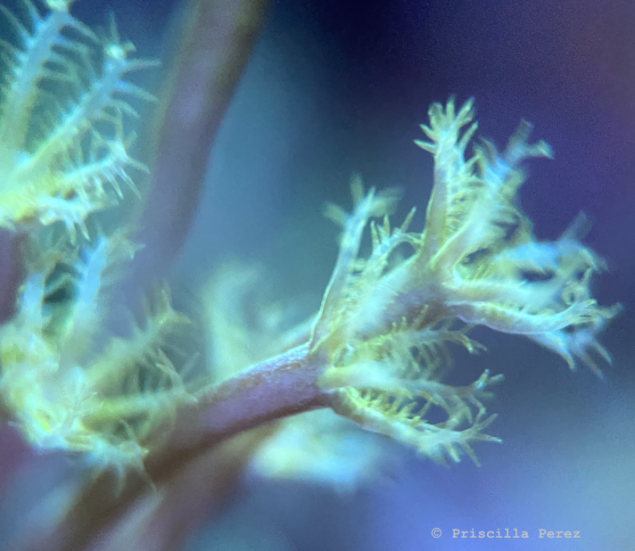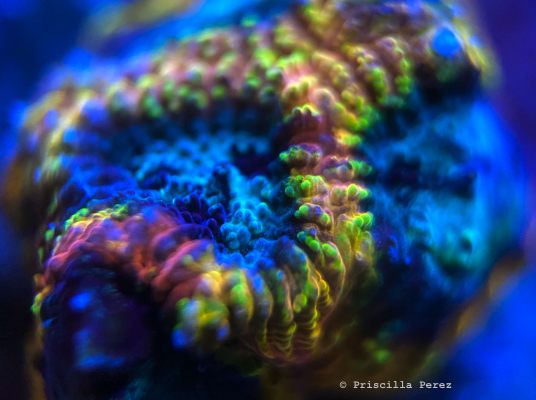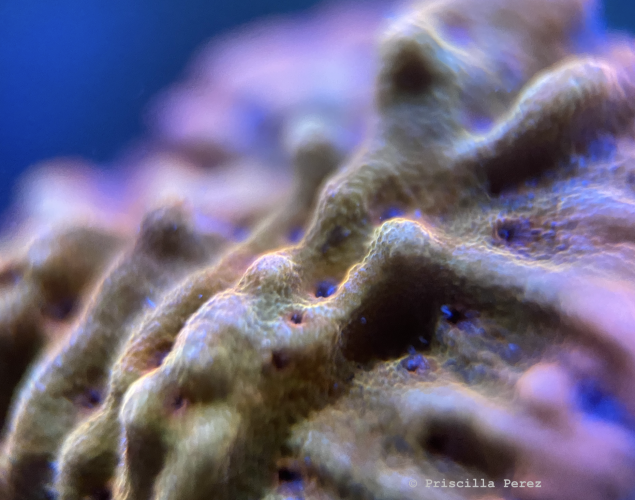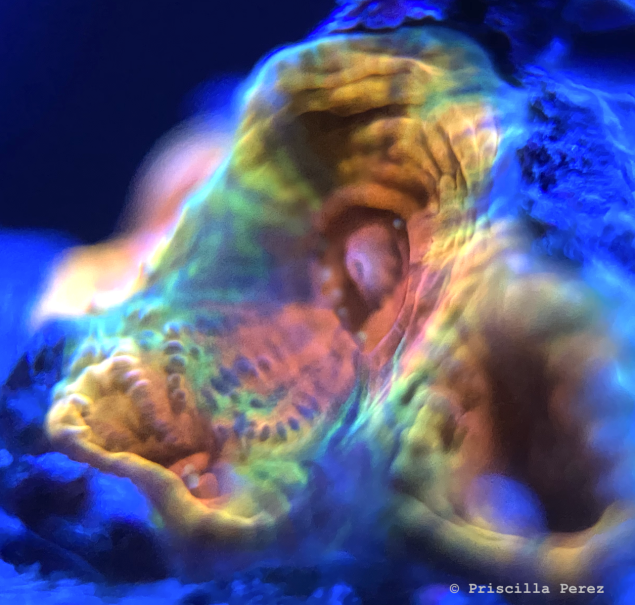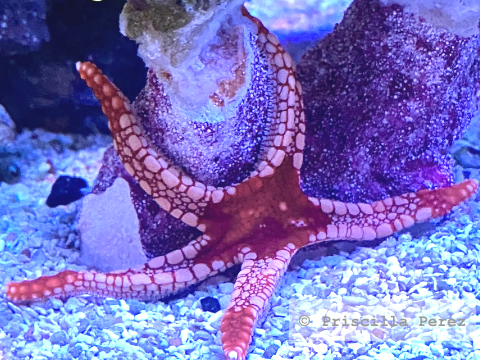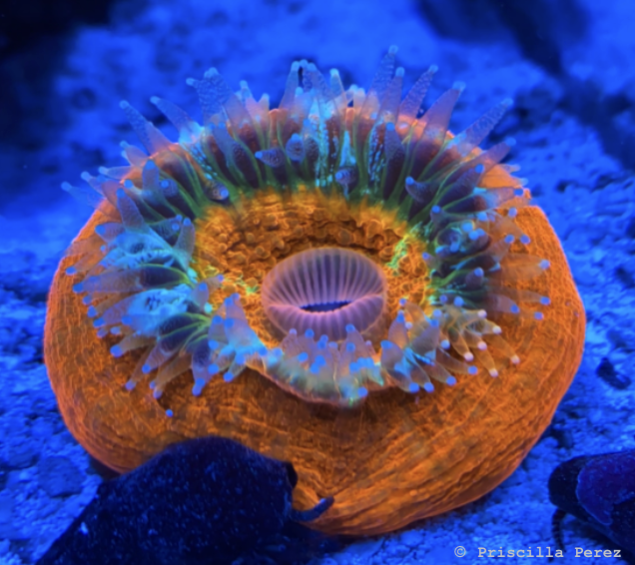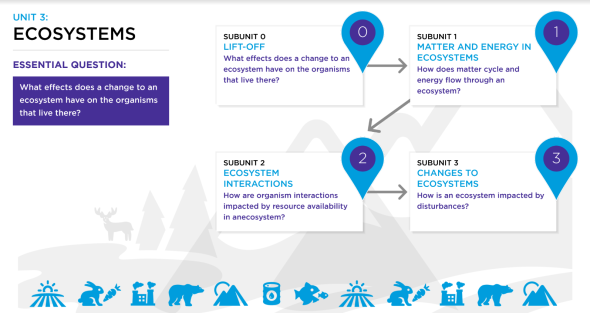
7th Grade Unit 3: Ecosystems Roadmap
This page hosts Unit 3: Ecosystems, and a roadmap of the 3 subunits that will be covered.
Subunit 1: Matter and Energy in Ecosystems
Link to this section
Below you will view and download:
🟦 Subunit Assessment Opportunities
🟦 5E Lesson Sequence
Subunit 1: Assessment Opportunities
Subunit 1 Assessment Opportunites
View and download (by making a copy)- Subunit 1 Assessments
What should my students know and be able to do?
What should I prioritize?
Note: The materials below are personal recommendations from teachers in the field.
Feel free to consider your context when deciding whether to follow these suggestions.
|
|
|
|
|
|
|
|
|
|
|
|
|
|
|
|
|
|
|
|
|
|
|
|
|
|
|
|
|
|
View and download (by making a copy)- Subunit 1 Assessments
Subunit 1: 5E Lesson Sequence
Subunit Description
📂 Download ALL lessons at one time for Unit 3: Subunit 1 from this folder. 📂
In this subunit, students explore food webs as a way to visualize how matter cycles and energy flows through an ecosystem. Students learn that the sun is the primary source of energy for an ecosystem because plants use photosynthesis to bring the sun’s energy into an ecosystem. Animals use cellular respiration to create energy from the food obtained in an ecosystem. Decomposers play an integral role and ensure that matter from dead organisms is made available to the ecosystem once again. Students apply what they learn to develop a model for how matter cycles and energy flows through an ecosystem.
| Lesson | Lesson Name | Teacher Document | Student Handout |
|---|---|---|---|
| 1 | Engage | ||
| 2 | Explore | ||
| 3 | Explain | ||
| 4 | Elaborate | 7.3 SU1 4Elaborate Teacher | |
| 5 | Evaluate | ||
📂 Download ALL lessons at one time for Unit 3: Subunit 1 from this folder. 📂
Subunit 2: Ecosystem Interactions
Link to this section
Below you will view and download:
🟦 Subunit Assessment Opportunities
🟦 5E Lesson Sequence
Subunit 2: Assessment Opportunities
Subunit 2 Assessment Opportunites
View and download (by making a copy)- Subunit 2 Assessments
What should my students know and be able to do?
What should I prioritize?
Note: The materials below are personal recommendations from teachers in the field.
Feel free to consider your context when deciding whether to follow these suggestions.
|
|
|
|
|
|
|
|
|
|
|
|
|
|
|
|
|
|
|
|
|
|
|
|
|
|
|
|
|
|
View and download (by making a copy)- Subunit 2 Assessments
Subunit 2: 5E Lesson Sequence
Subunit Description
📂 Download ALL lessons at one time for Unit 3: Subunit 2 from this folder. 📂
In this subunit, students explore organism interactions within an ecosystem. Students learn that ecosystems are composed of both biotic and abiotic factors and that changes in these factors may impact populations of organisms within an ecosystem. The availability of resources affects organisms in an ecosystem and the interactions between these organisms. Decomposers play a role in regulating some organism interactions as they help ensure that matter is made available in an ecosystem. Students apply what they learn to construct a model explaining how the organism interactions in an ecosystem are impacted by the availability of resources.
| Lesson | Lesson Name | Teacher Document | Student Handout |
|---|---|---|---|
| 1 | Engage | ||
| 2 | Explore | ||
| 3 | Explain | ||
| 4 | Elaborate | 7.3 SU2 4Elaborate Teacher | |
| 5 | Evaluate |
|
📂 Download ALL lessons at one time for Unit 3: Subunit 2 from this folder. 📂
Subunit 3: Changes to Ecosystems
Link to this section
Below you will view and download:
🟦 Subunit Assessment Opportunities
🟦 5E Lesson Sequence
Subunit 3: Assessment Opportunities
Subunit 3 Assessment Opportunites
View and download (by making a copy)- Subunit 3 Assessments
What should my students know and be able to do?
What should I prioritize?
Note: The materials below are personal recommendations from teachers in the field.
Feel free to consider your context when deciding whether to follow these suggestions.
|
|
|
|
|
|
|
|
|
|
|
|
|
|
|
|
|
|
|
|
|
|
|
|
|
|
|
|
|
|
View and download (by making a copy)- Subunit 3 Assessments
Subunit 1: 5E Lesson Sequence
Subunit Description
📂 Download ALL lessons at one time for Unit 3: Subunit 3 from this folder. 📂
In this subunit, students explore the concept that both abiotic and biotic changes can lead to ecosystem disturbances. Students learn that there are multiple types of ecosystems (e.g., aquatic and terrestrial), and that ecosystem changes can result from changes to either abiotic or biotic factors. Often, ecosystem changes are either natural or human caused, and they may affect a wide array of organisms within an ecosystem. Students apply what they learn to explain how human-caused changes in a specific ecosystem (tidal marsh or coastal scrub) may impact the organisms that live in that ecosystem.
| Lesson | Lesson Name | Teacher Document | Student Handout |
|---|---|---|---|
| 1 | Engage | ||
| 2 | Explore | ||
| 3 | Explain | ||
| 4 | Elaborate | 7.3 SU3 4Elaborate Teacher | |
| 5 | Evaluate |
|
📂 Download ALL lessons at one time for Unit 3: Subunit 3 from this folder. 📂
Unit 3: Ecosystems Documents
Link to this section
Below you will view and download: Unit Plan, Standards, Culminating Project Assessments and Rubrics, Common Misconceptions, Materials, Unit 0: Lift-Off Lessons and Resources.
7.3 Ecosystems: Overview
Overview
In this unit, students use what they learn about the flow of energy and cycling of matter to understand the role of photosynthesis and cellular respiration in organisms and in populations in an ecosystem. Students also examine how the availability of resources affects organism interactions and populations of organisms. Students use the Science and Engineering Practices of Constructing Explanations and Designing Solutions, Developing and Using Models, and Analyzing and Interpreting Data to show how ecosystems are interconnected. Students use the focal Science and Engineering Practice of Engaging in Argument From Evidence to show how abiotic or biotic components of an ecosystem affect the whole. The Crosscutting Concepts of Energy and Matter, Patterns, Cause and Effect, and Stability and Change help students tie together the concepts they learned from Earth’s systems and chemical reactions.
For the Group Culminating Project, students work together to construct a model that explains how matter cycles and energy flows in a specific ecosystem found in the San Francisco Bay Area. For the Individual Culminating Project, each student writes a short report explaining how further destruction of a specific ecosystem due to construction may impact one specific organism from the ecosystem.
7.3 Ecosystems: Unit Plan
Unit 3: Ecosystems - Unit Plan
View and download (by making a copy) of Unit 3 Plan
|
|
||
|
|
||
|
Assessment Boundary: Assessment does not include the biochemical mechanisms of photosynthesis.] [Clarification Statement: Emphasis is on describing that molecules are broken apart and put back together and that in this process, energy is released.] [Assessment Boundary: Assessment does not include details of the chemical reactions for photosynthesis or respiration.] [Clarification Statement: Emphasis is on cause and effect relationships between resources and growth of individual organisms and the numbers of organisms in ecosystems during periods of abundant and scarce resources.] [Clarification Statement: Emphasis is on predicting consistent patterns of interactions in different ecosystems in terms of the relationships among and between organisms and abiotic components of ecosystems. Examples of types of interactions could include competitive, predatory, and mutually beneficial.] . [Clarification Statement: Emphasis is on describing the conservation of matter and flow of energy into and out of various ecosystems, and on defining the boundaries of the system.] [Assessment Boundary: Assessment does not include the use of chemical reactions to describe the processes.] [Clarification Statement: Emphasis is on recognizing patterns in data and making warranted inferences about changes in populations, and on evaluating empirical evidence supporting arguments about changes to ecosystems.]
|
|
|
|
|
||
|
|
||
|
|
||
|
|
||
|
|
||
|
|
||
|
|
||
|
|
||
|
|
||
|
|
|
|
|
|
||||
|
|
|
|
|
|
|
|
|
|
|
|
|
|
|
|
|
|
|
|
|
|
||
|
|
||||
|
|
|
|
||
|
|
|
|||
|
|
|
|
|
|
|
|
||||
|
|
|
|
|
|
|
|
|
|||
|
|
|
|
|
|
|
|
||||
|
|
|
|||
|
|
||||
|
|
|
|
|
|
|
|
|
|
||
|
|
|
|||
“Disciplinary Core Ideas, Science and Engineering Practices, and Crosscutting Concepts” are reproduced verbatim from A Framework for K-12 Science Education: Practices, Crosscutting Concepts, and Core Ideas. DOI: https://doi.org/10.17226/13165. National Research Council; Division of Behavioral and Social Sciences and Education; Board on Science Education; Committee on a Conceptual Framework for New K-12 Science Education Standards. National Academies Press, Washington, DC. This material may be reproduced for noncommercial purposes and used by other parties with this attribution. If the original material is altered in any way, the attribution must state that the material is adapted from the original. All other rights reserved.
7.3 Ecosystems: Standards
Ecosystems
Next Generation Science Standards Performance Expectations
|
|
Assessment Boundary: Assessment does not include the biochemical mechanisms of photosynthesis.] |
|
|
Assessment Boundary: Assessment does not include details of the chemical reactions for photosynthesis or respiration.] |
|
|
|
|
|
|
|
|
|
|
|
[Clarification Statement: Emphasis is on recognizing patterns in data and making warranted inferences about changes in populations, and on evaluating empirical evidence supporting arguments about changes to ecosystems.] |
NGSS Lead States. 2013. Next Generation Science Standards: For States, By States. Washington, DC: The National Academies Press.
Disciplinary Core Ideas
LS1.C: Organization for Matter and Energy Flow in Organisms
- Plants, algae (including phytoplankton), and many microorganisms use the energy from light to make sugars (food) from carbon dioxide from the atmosphere and water through the process of photosynthesis, which also releases oxygen. These sugars can be used immediately or stored for growth or later use.
- Within individual organisms, food moves through a series of chemical reactions in which it is broken down and rearranged to form new molecules, to support growth, or to release energy.
LS2.A: Interdependent Relationships in Ecosystems
- Organisms, and populations of organisms, are dependent on their environmental interactions both with other living things and with nonliving factors.
- In any ecosystem, organisms and populations with similar requirements for food, water, oxygen, or other resources may compete with each other for limited resources, access to which consequently constrains their growth and reproduction.
- Growth of organisms and population increases are limited by access to resources.
- Similarly, predatory interactions may reduce the number of organisms or eliminate whole populations of organisms. Mutually beneficial interactions, in contrast, may become so interdependent that each organism requires the other for survival. Although the species involved in these competitive, predatory, and mutually beneficial interactions vary across ecosystems, the patterns of interactions of organisms with their environments, both living and nonliving, are shared.
LS2.B: Cycle of Matter and Energy Transfer in Ecosystems
- Food webs are models that demonstrate how matter and energy is transferred between producers, consumers, and decomposers as the three groups interact within an ecosystem. Transfers of matter into and out of the physical environment occur at every level. Decomposers recycle nutrients from dead plant or animal matter back to the soil in terrestrial environments or to the water in aquatic environments. The atoms that make up the organisms in an ecosystem are cycled repeatedly between the living and nonliving parts of the ecosystem.
LS2.C: Ecosystem Dynamics, Functioning, and Resilience
- Ecosystems are dynamic in nature; their characteristics can vary over time. Disruptions to any physical or biological component of an ecosystem can lead to shifts in all its populations.
PS3.D: Energy in Chemical Processes and Everyday Life
- The chemical reaction by which plants produce complex food molecules (sugars) requires an energy input (i.e., from sunlight) to occur. In this reaction, carbon dioxide and water combine to form carbon-based organic molecules and release oxygen.
- Cellular respiration in plants and animals involve chemical reactions with oxygen that release stored energy. In these processes, complex molecules containing carbon react with oxygen to produce carbon dioxide and other materials.
Science and Engineering Practices
Constructing Explanations and Designing Solutions
Constructing explanations and designing solutions in 6–8 builds on K–5 experiences and progresses to include constructing explanations and designing solutions supported by multiple sources of evidence consistent with scientific ideas, principles, and theories.
- Construct a scientific explanation based on valid and reliable evidence obtained from sources (including the students’ own experiments) and the assumption that theories and laws that describe the natural world operate today as they did in the past and will continue to do so in the future.
- Construct an explanation that includes qualitative or quantitative relationships between variables that predict phenomena.
*Engaging in Argument from Evidence (Focal Practice)
Engaging in argument from evidence in 6–8 builds from K–5 experiences and progresses to constructing a convincing argument that supports or refutes claims for either explanations or solutions about the natural and designed world.
- Construct an oral and written argument supported by empirical evidence and scientific reasoning to support or refute an explanation or a model for a phenomenon or a solution to a problem.
Developing and Using Models
Modeling in 6–8 builds on K–5 experiences and progresses to developing, using, and revising models to describe, test, and predict more abstract phenomena and design systems.
- Develop a model to describe unobservable mechanisms.
- Develop a model to describe phenomena.
Analyzing and Interpreting Data
Analyzing data in 6–8 builds on K–5 experiences and progresses to extending quantitative analysis to investigations, distinguishing between correlation and causation, and basic statistical techniques of data and error analysis.
- Analyze and interpret data to provide evidence for phenomena.
Crosscutting Concepts
*Energy and Matter (Focal Crosscutting Concept)
- Within a natural system, the transfer of energy drives the motion and/or cycling of matter.
- Matter is conserved because atoms are conserved in physical and chemical processes.
- The transfer of energy can be tracked as energy flows through a natural system.
Cause and Effect
- Cause and effect relationships may be used to predict phenomena in natural systems or designed systems.
Patterns
- Patterns can be used to identify cause and effect relationships.
Stability and Change
- Small changes in one part of a system might cause large changes in another part.
“Disciplinary Core Ideas, Science and Engineering Practices, and Crosscutting Concepts” are reproduced verbatim from A Framework for K-12 Science Education: Practices, Crosscutting Concepts, and Core Ideas. DOI: https://doi.org/10.17226/13165. National Research Council; Division of Behavioral and Social Sciences and Education; Board on Science Education; Committee on a Conceptual Framework for New K-12 Science Education Standards. National Academies Press, Washington, DC. This material may be reproduced for noncommercial purposes and used by other parties with this attribution. If the original material is altered in any way, the attribution must state that the material is adapted from the original. All other rights reserved.
Connections to the Nature of Science
Scientific Knowledge is Based on Empirical Evidence
- Science knowledge is based upon logical and conceptual connections between evidence and explanations.
- Science disciplines share common rules of obtaining and evaluating empirical evidence.
Scientific Knowledge Assumes an Order and Consistency in Natural Systems
- Science assumes that objects and events in natural systems occur in consistent patterns that are understandable through measurement and observation.
NGSS Lead States. 2013. Next Generation Science Standards: For States, By States. Washington, DC: The National Academies Press.
Link to Connect the 7th Grade Ecosystems Unit with Prior Knowledge doc.
7.3 Ecosystems: Culminating Project Assessments and Rubrics
Culminating Project Assessments and Rubrics
📂Download ALL files from 7.3 Culminating Project Assessments folder.📂
| Culminating Project File Docs |
|---|
| 7.3 Main–Culminating Projects |
| 7.3 Oral Presentation Rubric |
| 7.3 Science and Engineering Content Rubric |
| 7.3 Science and Engineering Practices Rubric |
📂Download ALL files from 7.3 Culminating Project Assessments folder.📂
7.3 Ecosystems: Common Misconceptions
Common Misconceptions
Lift-Off
What effects does a change to an ecosystem have on the organisms that live there?
|
|
|
|
|
|
Subunit 1: Matter and Energy in Ecosystems
How does matter cycle and energy flow through an ecosystem?
|
|
|
|
(http://assessment.aaas.org/misconceptions/1/IE/173/IEM006) |
|
|
|
|
|
|
|
|
|
|
|
|
|
|
|
|
|
|
|
|
|
|
|
|
|
Subunit 2: Ecosystem Interactions
How are organism interactions impacted by resource availability in an ecosystem?
|
|
|
|
|
|
|
|
|
|
|
|
|
|
|
Subunit 3: Changes to Ecosystems
How is an ecosystem impacted by abiotic and biotic disturbances?
|
|
|
|
|
|
|
|
|
|
|
|
7.3 Ecosystems: Materials
Materials
The Unit 3: Ecosystems Materials table includes all of the items needed to teach five sections of this unit in a classroom of 32 students (eight groups of four). A detailed breakdown of how these items are used throughout the unit can be found in your Teacher Background Section at the subunit level and in each individual lesson in your Teacher Guide.
- Permanent materials have already been provided to all middle schools in the district and are expected to be reused from year to year.
- Consumable materials are replenished on an as-needed basis from year to year.
- Teacher-provided materials must be supplied by teachers each year.
Unit 3: Ecosystems Materials
|
*or sunny location in classroom
**quantity may vary by student experiment designs
7.3 Ecosystems: Subunit 0: Lift-Off Lessons
Subunit 0: Lift-Off
📂 Download ALL lessons at one time for Subunit 0: Lift-Off from this folder.📂
Lessons
| Lift-Off Lesson Documents |
|---|
| 7.3 SU0 General Groupwork Slide |
| 7.3 SU0 Liftoff Slides |
| 7.3 SU0 Liftoff Teacher |
| 7.3 SU0 Liftoff Student |
📂 Download ALL lessons at one time for Subunit 0: Lift-Off from this folder.📂
7.3 Ecosystems: Do you want to learn more about this unit?
Do you want to learn more about this unit?
Resources
Here are some resources for Unit 7.3 Ecosystems:
Ecosystems
CK-12 Foundation. “12 Foundation.” CK. CK-12 Foundation. Accessed November 4, 2019. https://www.ck12.org/c/life-science/ecology-overview/.
CK-12: Ecological Organization
CK-12 Foundation. “12 Foundation.” CK. CK-12 Foundation. Accessed November 4, 2019. https://www.ck12.org/c/life-science/ecological-organization/.
CK-12 Foundation. “12 Foundation.” CK. CK-12 Foundation. Accessed November 4, 2019. https://www.ck12.org/c/life-science/ecosystems/.
Strategic Education Research Partnership (SERP): A Chesapeake Bay Food Web
“Populations in Balance.” Chesapeake Bay Food Web [L1.3] SciGen SERP. Accessed November 4, 2019. https://serpmedia.org/scigen/l1.3.html.
CK-12: Habitat and Niche
CK-12 Foundation. “12 Foundation.” CK. CK-12 Foundation. Accessed November 4, 2019. https://www.ck12.org/c/life-science/habitat-and-niche/.
CK-12: Terrestrial Ecosystems
CK-12 Foundation. “12 Foundation.” CK. CK-12 Foundation. Accessed November 4, 2019. https://www.ck12.org/c/life-science/terrestrial/.
CK-12: Aquatic Ecosystems
CK-12 Foundation. “12 Foundation.” CK. CK-12 Foundation. Accessed November 4, 2019. https://www.ck12.org/c/life-science/aquatic/.
PBS LearningMedia California: Ecosystem Challenge
Plum Landing. “Ecosystem Challenge!” PBS LearningMedia. Plum Landing, October 3, 2019. https://ca.pbslearningmedia.org/resource/plum14.sci.life.lpecochal/ecosystem-challenge/#.WzCH4BJKjUI.
Organism Interactions
CK-12 Foundation. “12 Foundation.” CK. CK-12 Foundation. Accessed November 4, 2019. https://www.ck12.org/c/life-science/competition/.
CK-12 Foundation. “12 Foundation.” CK. CK-12 Foundation. Accessed November 4, 2019. https://www.ck12.org/c/life-science/predation/.
CK-12 Foundation. “12 Foundation.” CK. CK-12 Foundation. Accessed November 4, 2019. https://www.ck12.org/c/life-science/symbiosis/.
SERP: A Chesapeake Bay Food Web
“Populations in Balance.” Chesapeake Bay Food Web [L1.3] SciGen SERP. Accessed November 4, 2019.
https://serpmedia.org/scigen/l1.3.html
Energy in an Ecosystem
CK-12 Foundation. “12 Foundation.” CK. CK-12 Foundation. Accessed November 4, 2019. https://www.ck12.org/c/life-science/producer/.
CK-12: Consumers and Decomposers
CK-12 Foundation. “12 Foundation.” CK. CK-12 Foundation. Accessed November 4, 2019. https://www.ck12.org/c/life-science/consumers-and-decomposers/.
PBS LearningMedia California: Producers, Consumers, Decomposers
WGBH. “Producers, Consumers, Decomposers.” PBS LearningMedia. WGBH, October 25, 2019.
https://ca.pbslearningmedia.org/resource/tdc02.sci.life.oate.lp_energyweb/producers-consumers-decomposers/#.Wy4LQBJKjUI.
CK-12: Food Chain
CK-12 Foundation. “12 Foundation.” CK. CK-12 Foundation. Accessed November 4, 2019. https://www.ck12.org/c/life-science/food-chain/.
CK-12: Energy Flow
CK-12 Foundation. “12 Foundation.” CK. CK-12 Foundation. Accessed November 4, 2019. https://www.ck12.org/c/life-science/energy-flow/.
Matter in an Ecosystem
CK-12: Carbon Cycle
CK-12 Foundation. “12 Foundation.” CK. CK-12 Foundation. Accessed November 4, 2019. https://www.ck12.org/c/life-science/carbon-cycle/.
Pollution
CK-12: Air Pollution
CK-12 Foundation. “12 Foundation.” CK. CK-12 Foundation. Accessed November 4, 2019. https://www.ck12.org/c/life-science/air-pollution/.
CK-12: Water Pollution
CK-12 Foundation. “12 Foundation.” CK. CK-12 Foundation. Accessed November 4, 2019. https://www.ck12.org/c/life-science/water-pollution/.
CK-12: Soil and Water Management
CK-12 Foundation. “12 Foundation.” CK. CK-12 Foundation. Accessed November 4, 2019. https://www.ck12.org/c/life-science/soil-and-water/.
Habitats
CK-12: Habitat Destruction
CK-12 Foundation. “12 Foundation.” CK. CK-12 Foundation. Accessed November 4, 2019. https://www.ck12.org/c/life-science/habitat-destruction/.
SERP: Ecological Disturbances
“Populations in Balance.” Ecological Disturbances [L1.2] SciGen SERP. Accessed November 4, 2019. https://serpmedia.org/scigen/l1.2.html.
SERP: Invasive Species
“Populations in Balance.” Snake Invaders • Scene [L1.1] SciGen SERP. Accessed November 4, 2019. https://serpmedia.org/scigen/l1.1.html.
SERP: Barnyard Backfire
“Populations in Balance.” Comic "Barnyard Backfire" • Reading [L1.4] SciGen SERP. Accessed November 4, 2019. https://serpmedia.org/scigen/l1.4.html.
PBS LearningMedia California: Arctic Ecosystem
WGBH Educational Foundation. “Arctic Ecosystem.” PBS LearningMedia. WGBH Educational Foundation, October 24, 2019. https://ca.pbslearningmedia.org/resource/ipy07.sci.life.eco.arcticecosys/arctic-ecosystem/#.WzCHsBJKjUI
Assessment Practice Items
Stanford University: Stanford NGSS Assessment Project, Short-Response Items
“Short-Response Items.” Short-response items | Stanford NGSS Assessment Project. Accessed November 4, 2019. https://snapgse.stanford.edu/snap-assessments/short-response-items.
Other Resources Used in 7.3 Ecosystems
"Classification And Types Of Wetlands | US EPA". US EPA, 2019. https://www.epa.gov/wetlands/classification-and-types-wetlands#tidal.
“Coastal Scrub.” Coastal Scrub |. Accessed November 5, 2019. https://sustain.sfsu.edu/content/coastal-scrub.
Departmental, Webcast-legacy. “Donut.” YouTube. YouTube, August 15, 2012. https://www.youtube.com/watch?v=dLNv-cBKr-M&feature=youtu.be.
“Ecology Lab: The Habitable Planet.” Ecology Lab | The Habitable Planet. Accessed February 3, 2020. https://www.learner.org/wp-content/interactive/envsci/ecology/ecology.html.
Foundation, CK-12. “12 Foundation.” CK. Accessed November 4, 2019. https://www.ck12.org/c/life-science/#/?_k=fe7p05.
Foundation, CK-12. “12 Foundation.” CK. Accessed, Nov 4, 2019 . https://www.ck12.org/c/life-science/photosynthesis/lesson/Photosynthesis-MS-LS/?referrer=concept_details.
Foundation, CK-12. “12 Foundation.” CK. Accessed November 5, 2019. https://www.ck12.org/book/CK-12-Life-Science-Concepts-For-Middle-School/section/12.18/.
The International Union for Conservation of Nature’s Red List of Threatened Species, n.d. https://www.iucnredlist.org/.
http://vhmsscience.weebly.com/. Retrieved from http://vhmsscience.weebly.com/uploads/1/2/7/6/12762866/ecology_part_3_reading.pdf
Harwood, Jessica, Douglas Wilkin, Doris Kraus, Niamh Gray-Wilson, Jean Brainard, Sarah Johnson, Jane Willan, and Corliss Karasov. “Cellular Respiration.” CK. CK-12 Foundation, July 4, 2019. https://www.ck12.org/biology/cellular-respiration/lesson/Cellular-Respiration-MS-LS/?referrer=concept_details.
Harwood, Jessica, Douglas Wilkin, Doris Kraus, Niamh Gray-Wilson, Jean Brainard, Sarah Johnson, Jane Willan, and Corliss Karasov. “Leaves and Photosynthesis.” CK. CK-12 Foundation, July 4, 2019. https://www.ck12.org/c/life-science/photosynthesis/lesson/Photosynthesis-MS-LS/?referrer=concept_details.
“Home: Earth Day Every Day Challenge: SFUSD Sustainability.” earthdayeverydaysf. Accessed November 4, 2019. https://www.earthdayeverydaysf.com/.
Morton, Jennifer. "Balancing Act: Otters, Urchins And Kelp". QUEST, 2019. https://ww2.kqed.org/quest/2014/02/25/balancing-act-otters-urchins-and-kelp/.
“NOVA: Decomposers.” PBS LearningMedia. NOVA, October 11, 2019. https://ca.pbslearningmedia.org/resource/tdc02.sci.life.oate.decompose/decomposers/#.WywPOhJKjUJ.
“Pacific Coast Science and Learning Center (U.S. National Park Service).” National Parks Service. U.S. Department of the Interior. Accessed November 5, 2019. https://www.nps.gov/rlc/pacificcoast/index.htm.
"Saving Tidal Marshes In The San Francisco Bay | U.S. Climate Resilience Toolkit". Toolkit.Climate.Gov, 2019. https://toolkit.climate.gov/case-studies/saving-tidal-marshes-san-francisco-bay.
Presser, Theresa S., and Samuel N. Luoma. “Ecosystem-Scale Selenium Model for the San Francisco Bay-Delta Regional Ecosystem Restoration Implementation Plan.” San Francisco Estuary and Watershed Science 11, no. 1 (2013). https://doi.org/10.15447/sfews.2013v11iss1art2.
sfenvironment.org.
Retrieved from https://sfenvironment.org/article/ecosystems/coastal-scrub
Veronica Davison, Sacramento Fish & Wildlife Office. "Tidal Marsh Ecosystem Recovery | Sacramento Fish & Wildlife Office". Sacramento Fish And Wildlife, 2019. https://www.fws.gov/sacramento/es/Recovery-Planning/Tidal-Marsh/.
"Wetland And Aquatic Research Center". Usgs.Gov, 2019. https://www.usgs.gov/centers/wetland-and-aquatic-research-center-warc.
Wilkin, Douglas, and Jean Brainard. “Carbon Cycle.” CK. CK-12 Foundation, July 4, 2019. https://www.ck12.org/c/biology/carbon-cycle/lesson/Carbon-Cycle-BIO/?referrer=concept_details.
View and download (by making a copy) of Resources
Note: The CC BY-NC 4.0 License does not apply to photos, images, articles, and other materials within the curriculum that have been licensed by San Francisco Unified School District and Stanford University (the Authors). These include but are not limited to photos from commercial stock photo/image agencies such as Shutterstock.com or Getty Images (iStock.com) and photos or graphics where the Authors obtained permission from organizations such as UCMP or SERP. This CC BY-NC 4.0 License also does not apply to articles that the Authors received permission to reprint [Reprinted with Permission]. You can identify such a photo, image, or licensed material by looking at the credit embedded within or associated with the content. You are allowed to reproduce the licensed material for your own personal, classroom, non-commercial use only, BUT (i) you may not modify, alter, adapt, or otherwise create any derivative work from, a licensed material and (ii) you may not distribute, transmit or disseminate a licensed material or any copy or derivative work thereof, to any third party, whether by itself, as part of a large works, or otherwise.
Note also, that throughout the student pages, there are some icons created by SFUSD and Stanford that may not have a credit line because of lack of space.
The general icons that follow were created by the San Francisco Unified School District and Stanford University and are all [CC BY-NC 4.0]:
These culminating project icons that follow were created or photographed by the San Francisco Unified School District and Stanford University and are all [CC BY-NC 4.0]:
7th Grade Science Units Link to this section
This page was last updated on September 17, 2024


